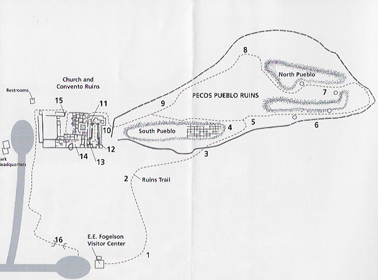
Location
In front of Visitor Center (N35D33'01.248 X W105D41'10.547)
Flowers first observed: 8/4/17
Plant w/Flowers

The Flower

Distribution
" AZ, NM and TX, north to SD and WY." (SEINet)
Description
"General: Biennial to perennial herbs from fibrous roots or thin, delicate taproots; plants up to 30 cm tall, strigose to hirsute with appressed hairs; the plant first produces erect stems which will eventually bear flowers, then produces sterile runners; the fertile stems are generally upright, leafy only toward the base, with flower-tipped scapes rising above the leaves; sterile stems (stolons) are usually lax, long, trailing, leafy, and often rooting at the tips. Leaves: Alternate along the stems, often also with a persistent cluster of basal leaves; lower leaves on long petioles, the blades oblanceolate, up to 2.5 cm long, with entire to dentate margins; upper leaves sessile, reduced, linear to narrowly oblanceolate, and strigose. Flowers: Flower heads showy and radiate, with white rays and yellow discs, the heads solitary on the tips of long leafless stems; involucres hemispheric, 3-5 mm high and 6-13 mm wide, the phyllaries in 2-3 subequal series, glandular and hirsute; ray flowers 40-125 per flower head, the petals 5-10 mm long and 1 mm wide, mostly white but often with a purple stripe on the abaxial (lower) surface; disc flowers yellow. Fruits: Achenes 2 nerved, sparsely hairy to glabrous; topped with a 2-layered pappus of bristles." (SEINet)
Ethnobotanical Uses
Medicine:
"Navajo, Ramah Ceremonial Medicine Cold infusion of leaves used ceremonially as a medicine and as a fumigant. Dermatological Aid Poultice of chewed leaves applied to spider bites and used as a hemostat. Disinfectant Cold infusion of leaves used ceremonially for 'lightning infection.' Hemostat Poultice of chewed leaves applied as a hemostatic. Snakebite Remedy Compound poultice of plant applied to snakebite. Veterinary Aid Cold infusion of leaves used aas eyewash for livestock." (Moerman 218-9)
Other Uses:
"Keres, Western Brushes & Brooms Tied bunches of plants used for brooms." (Moerman 219)
Internet Links